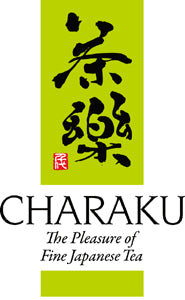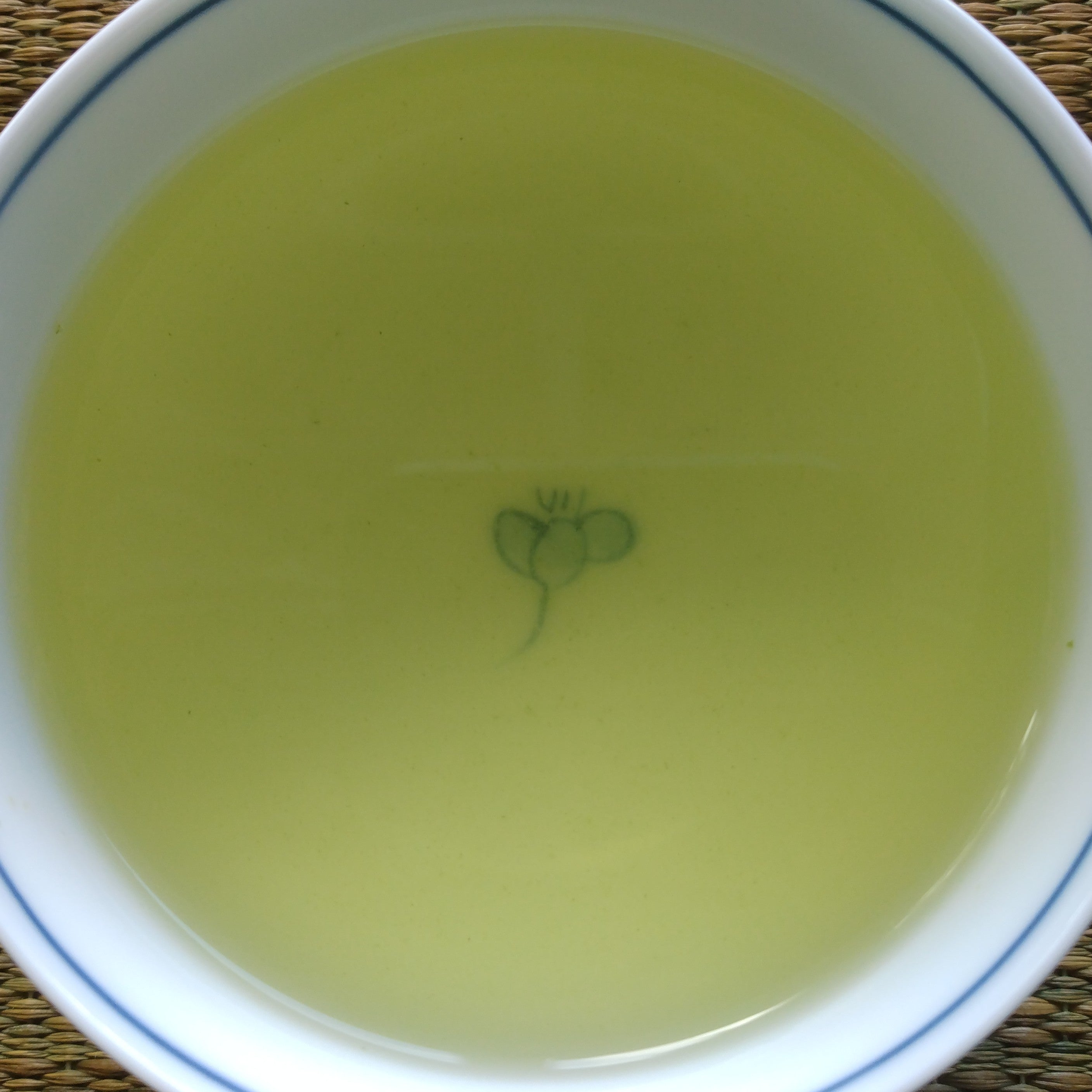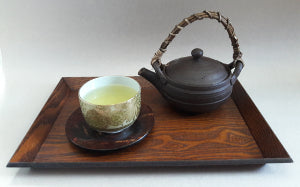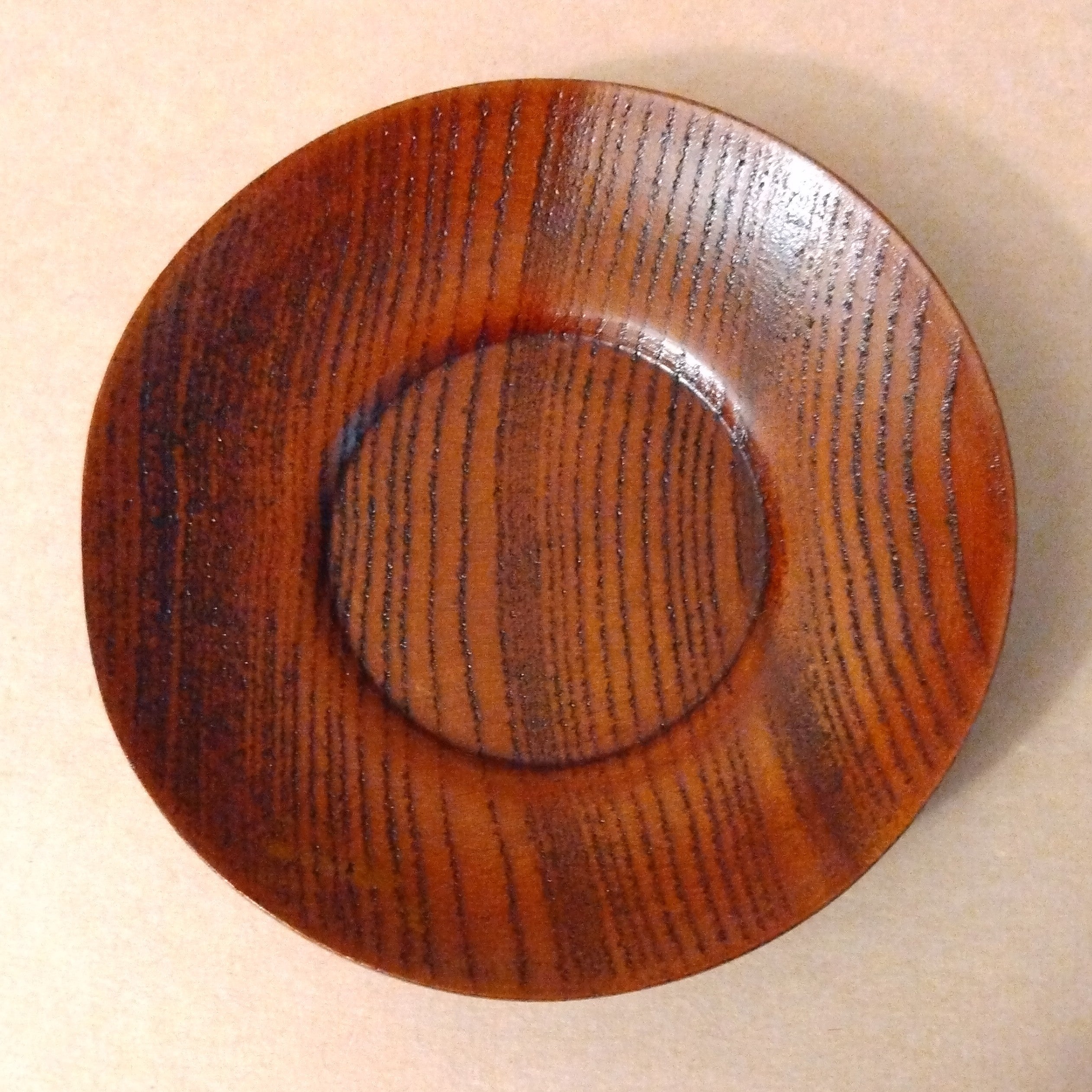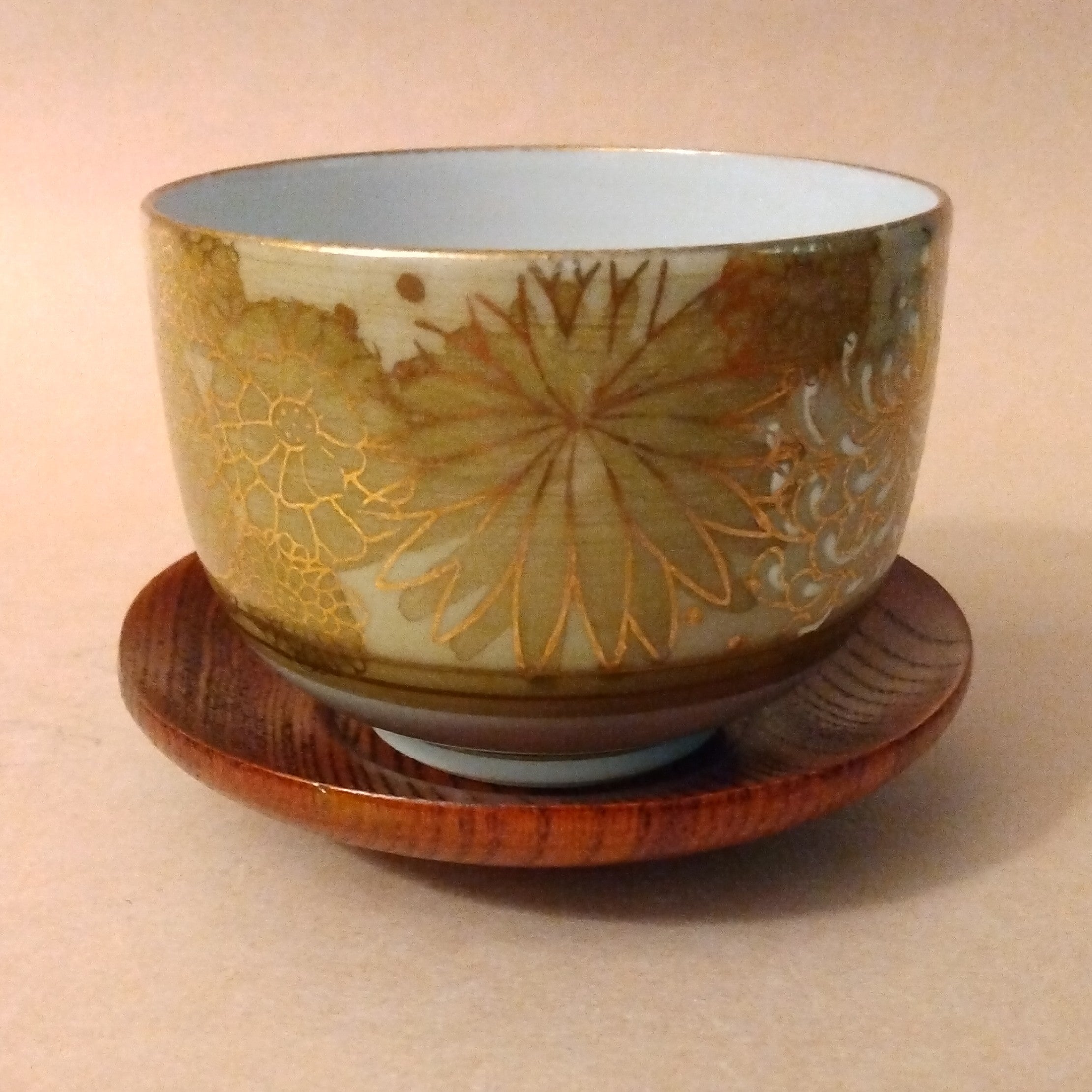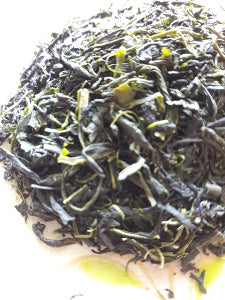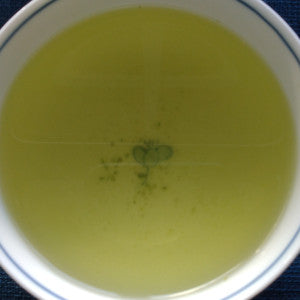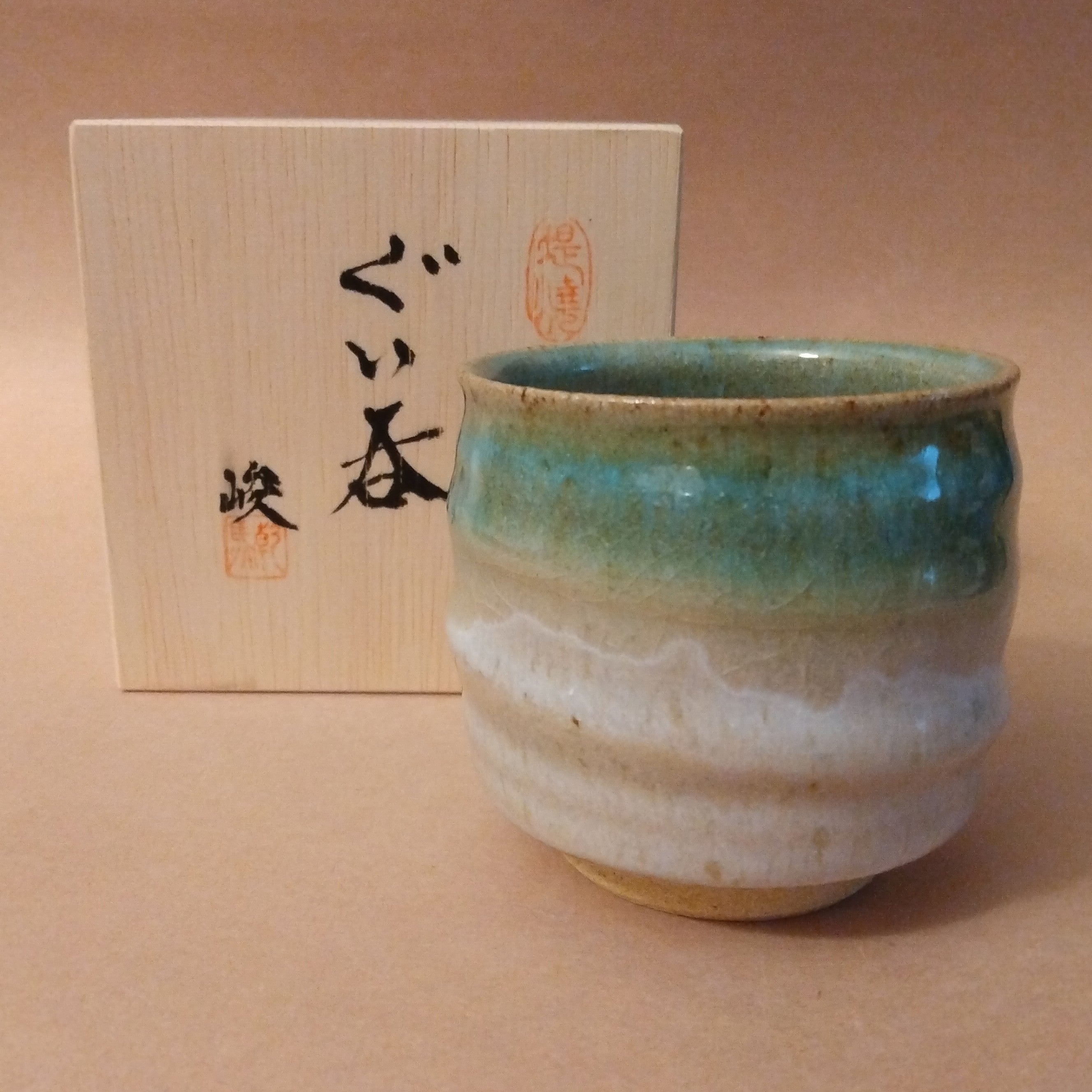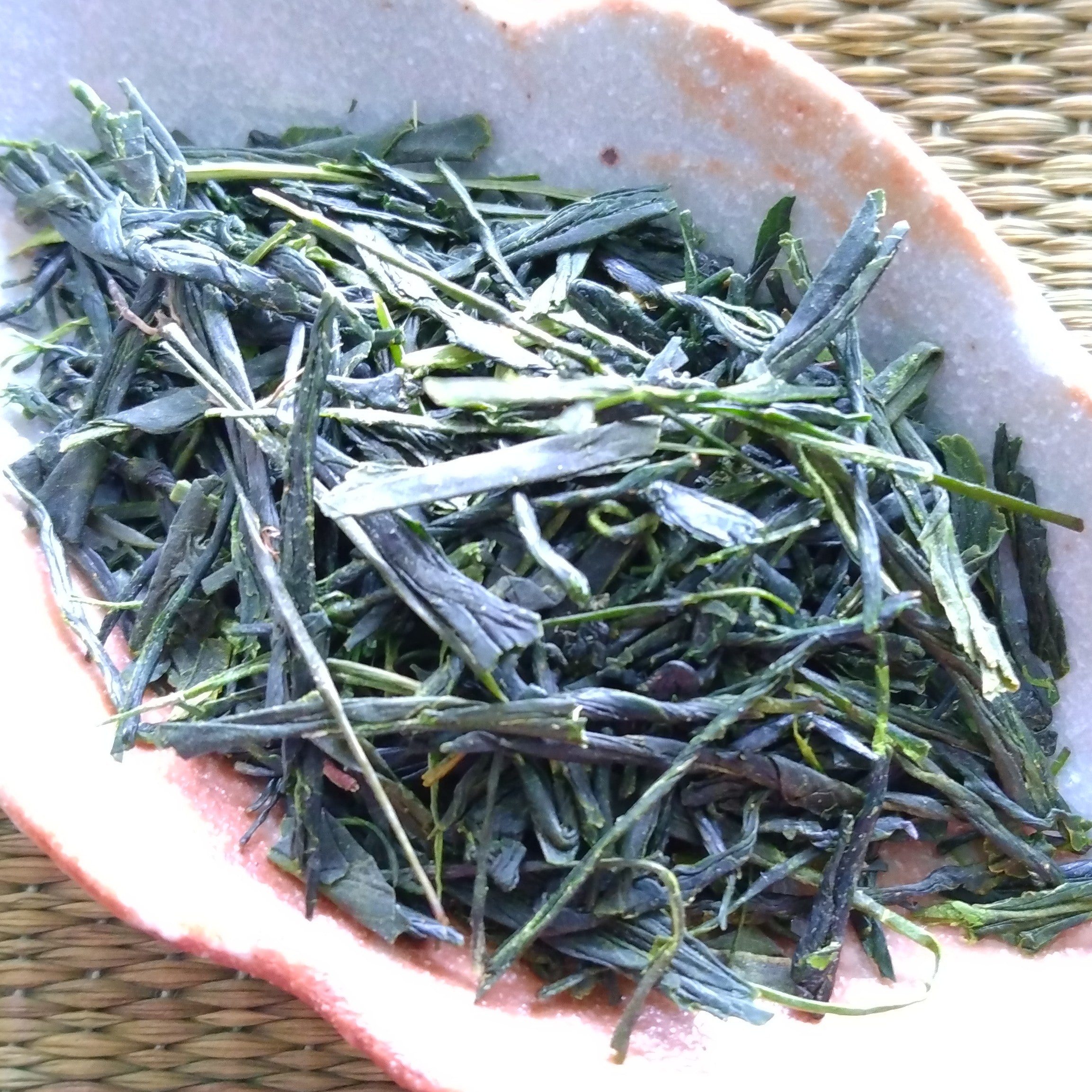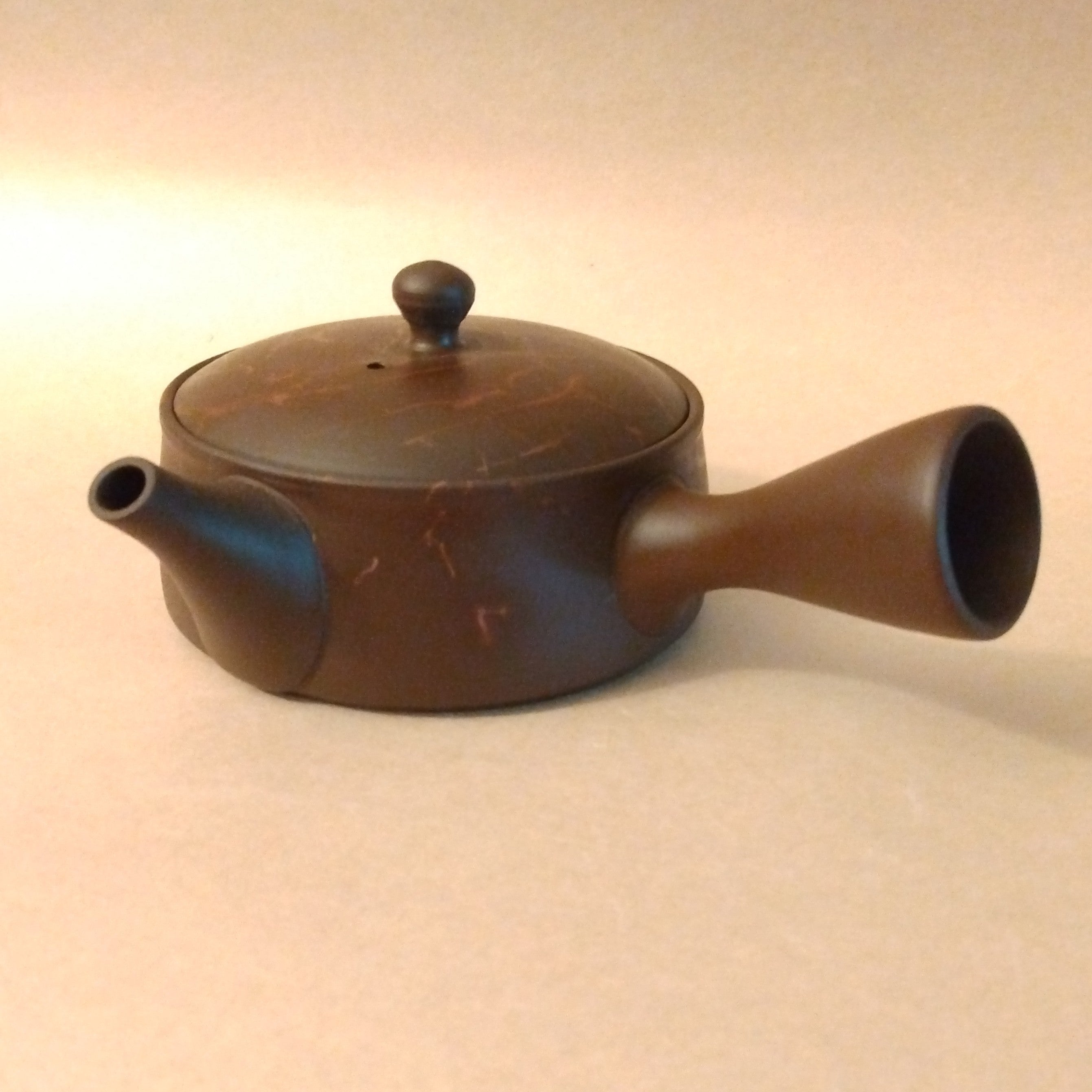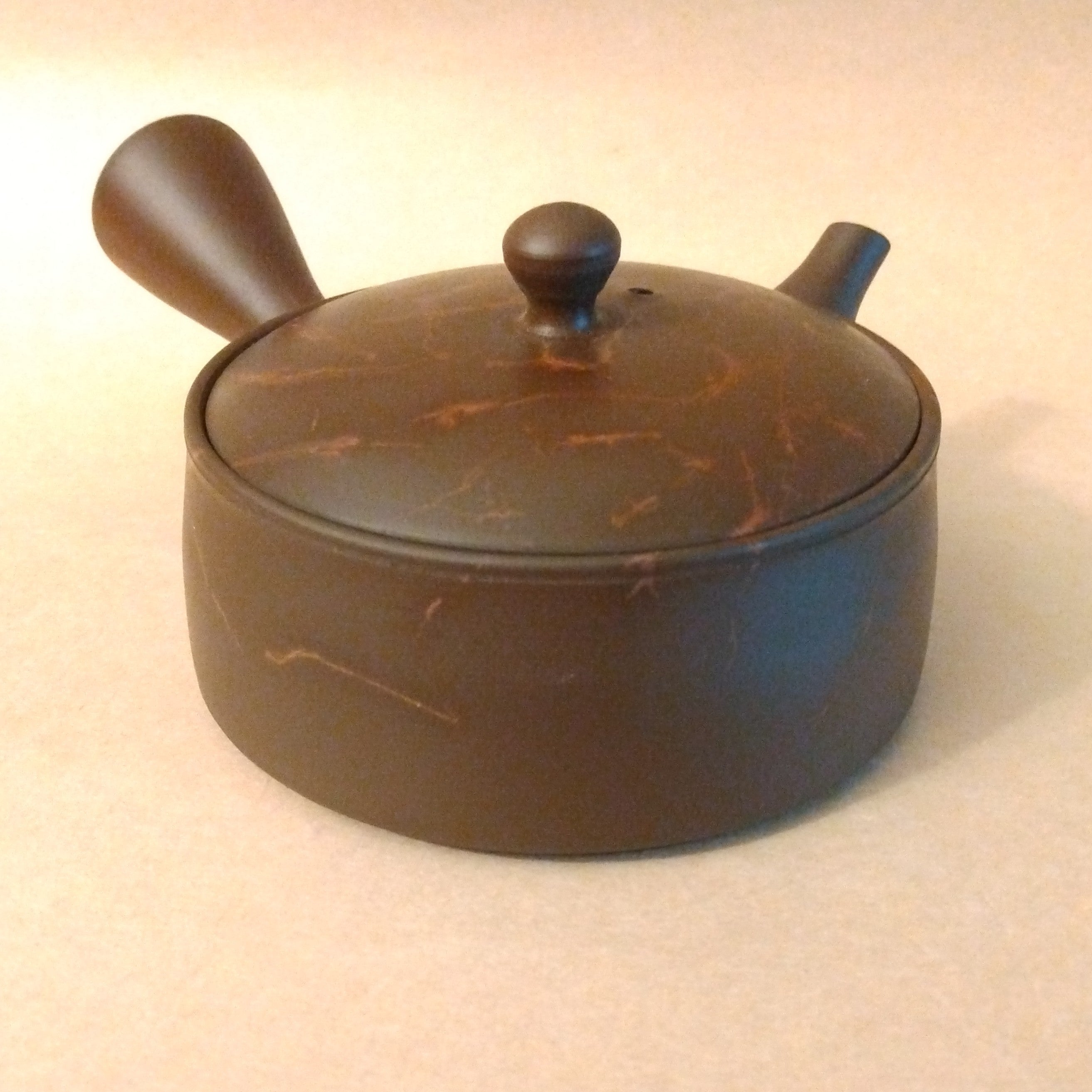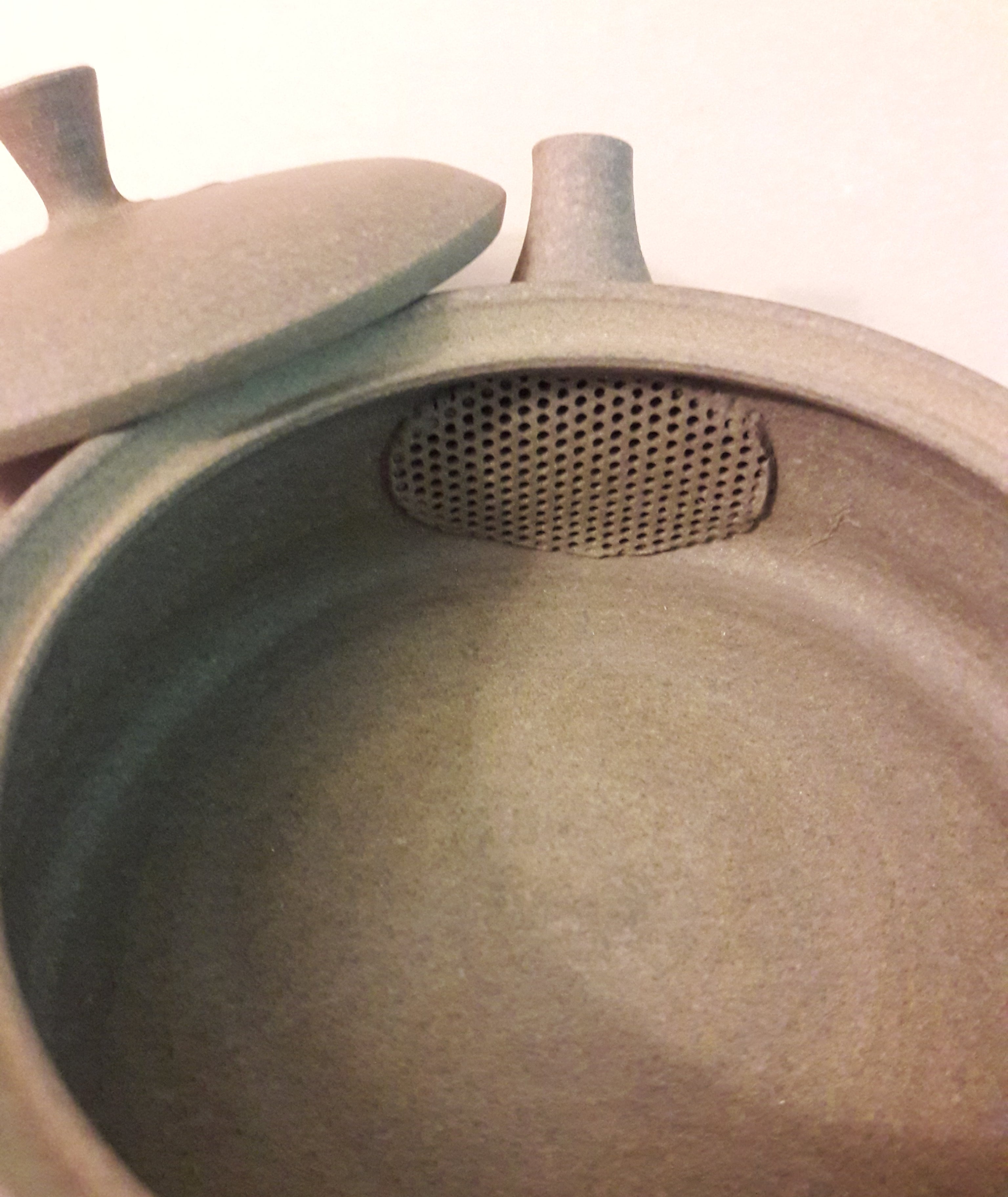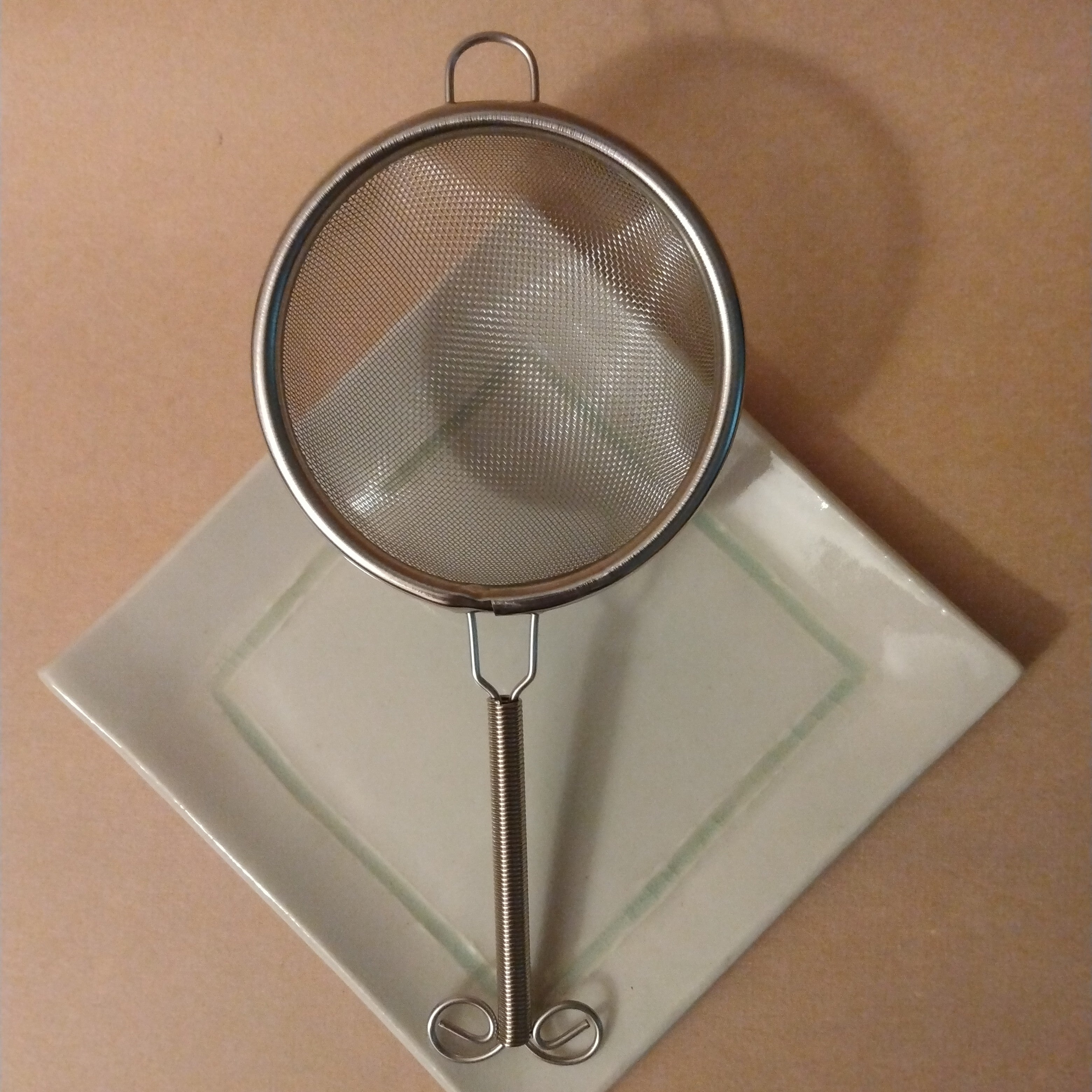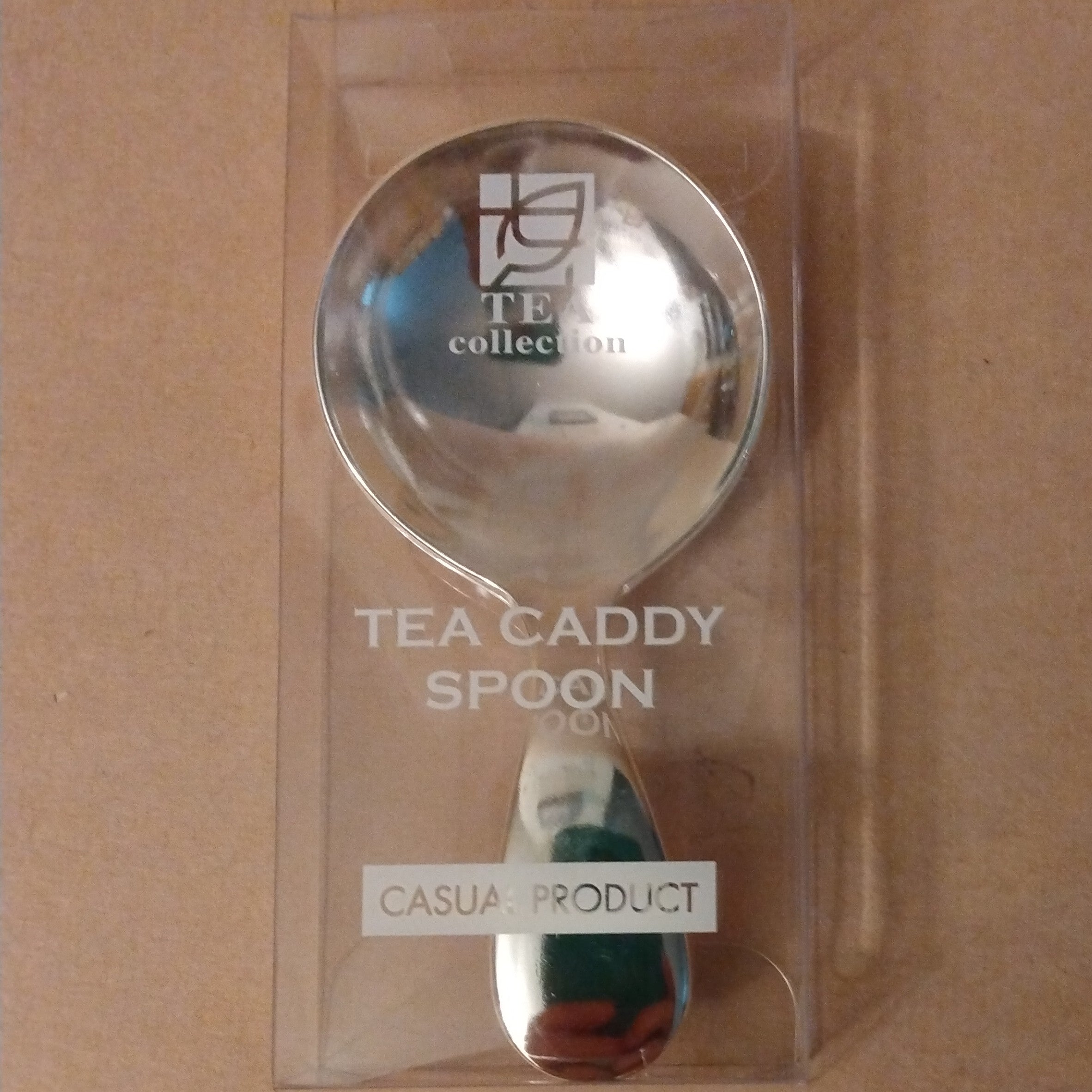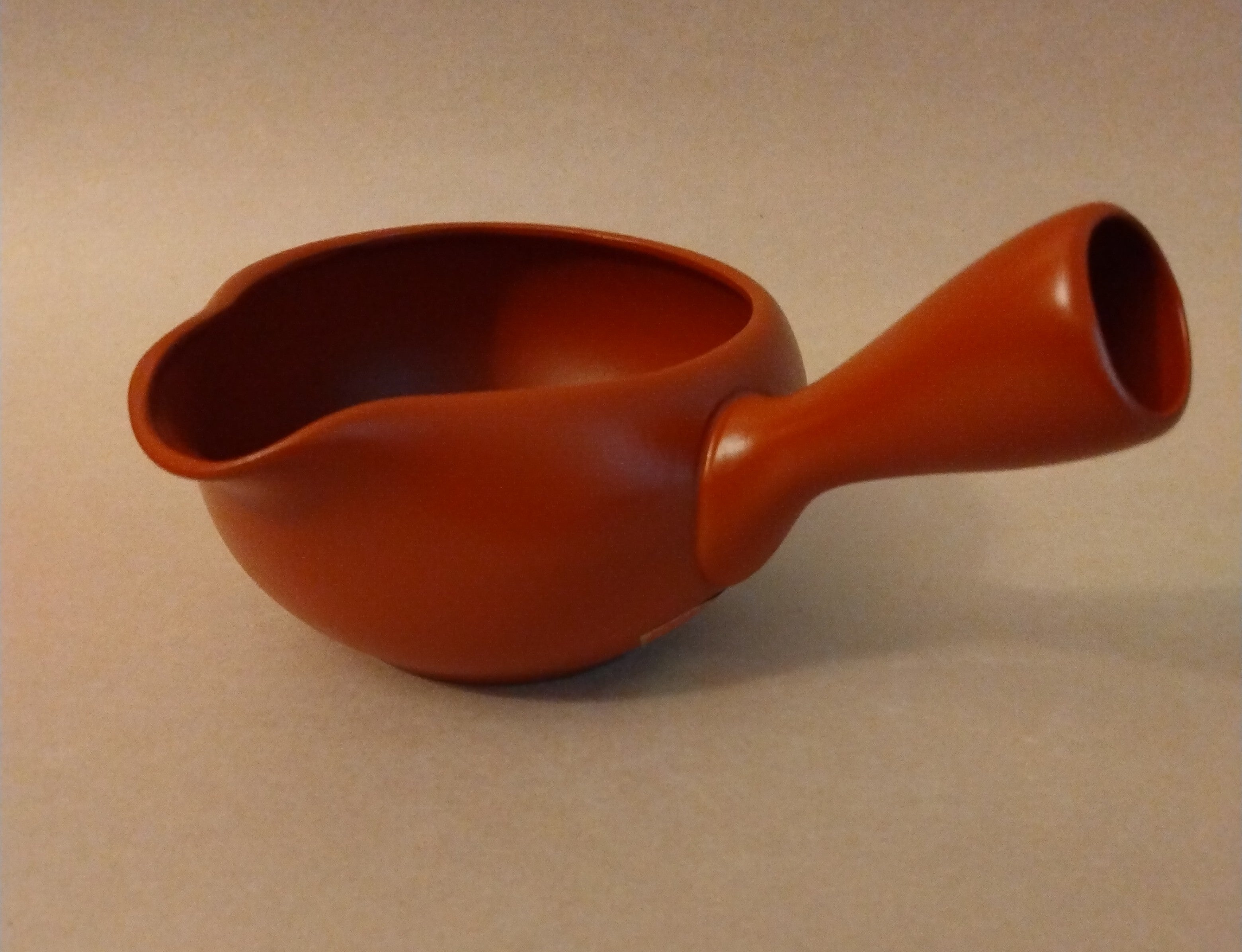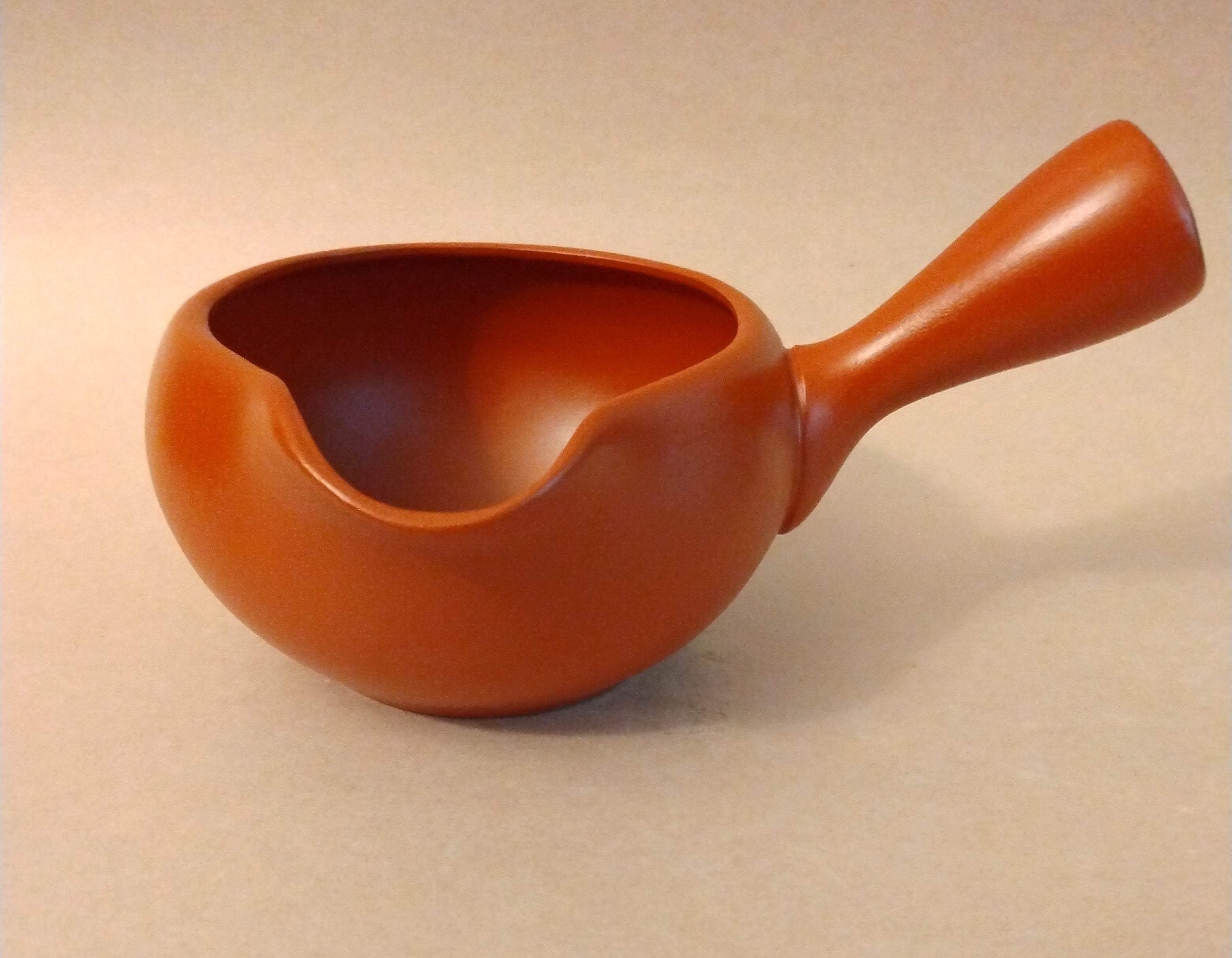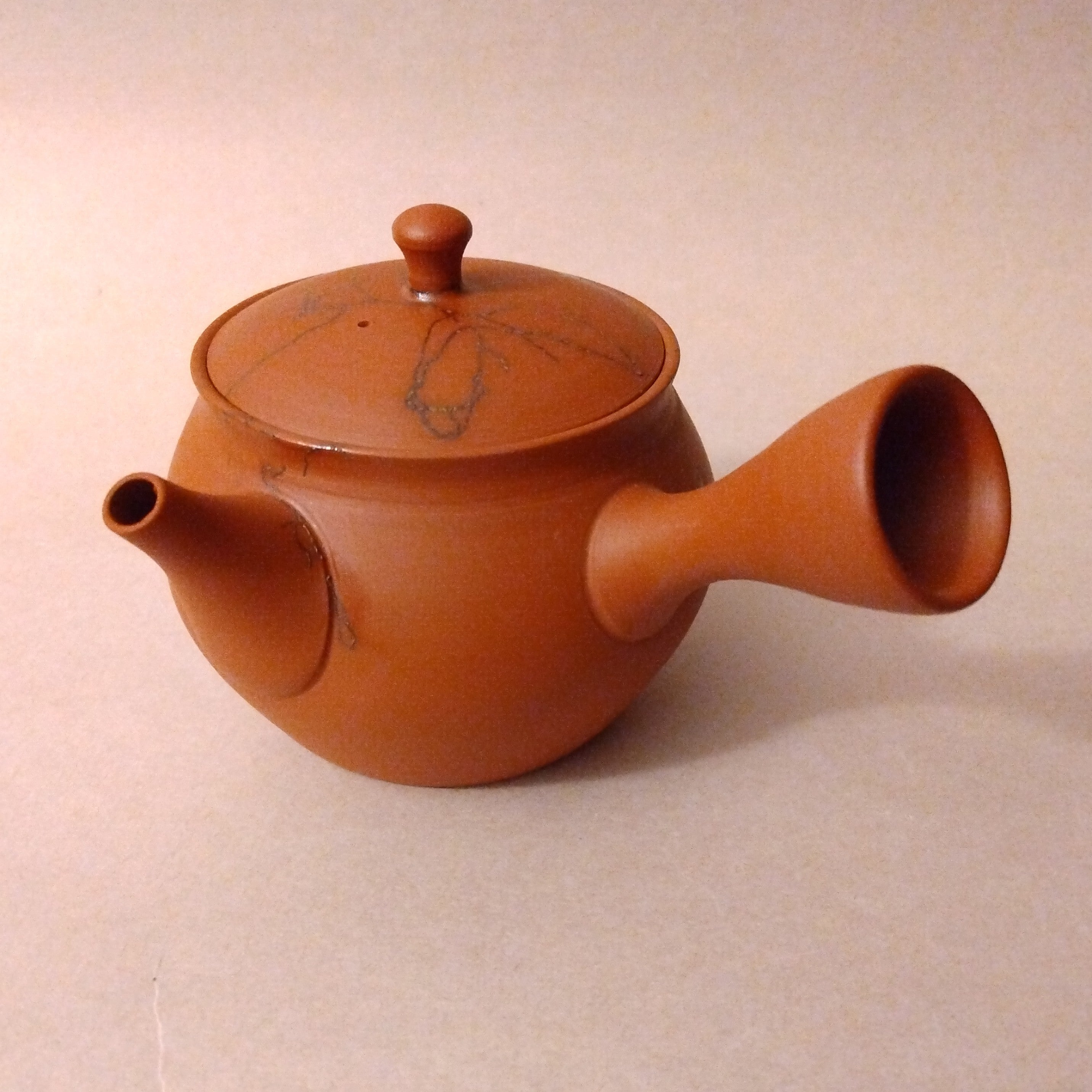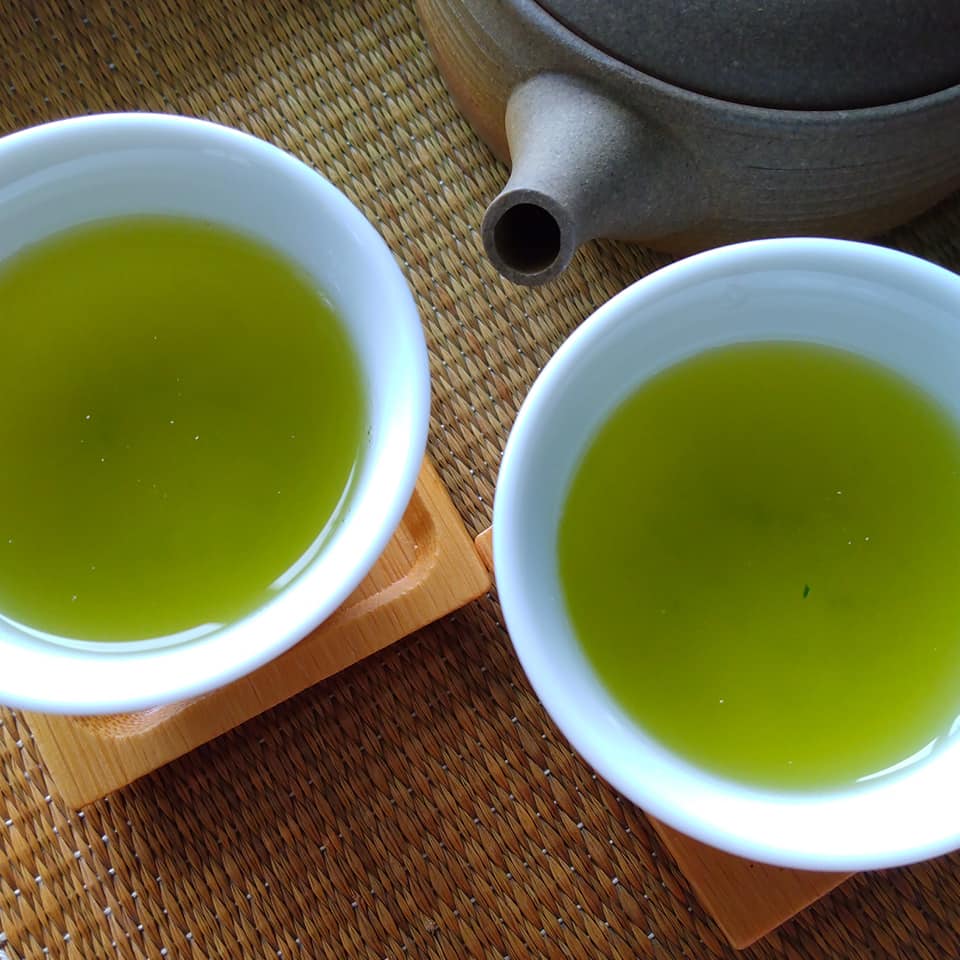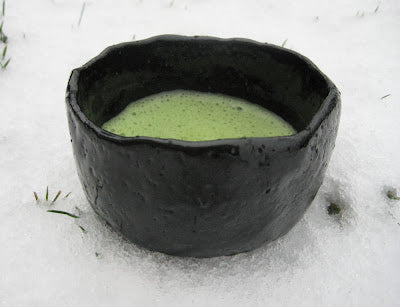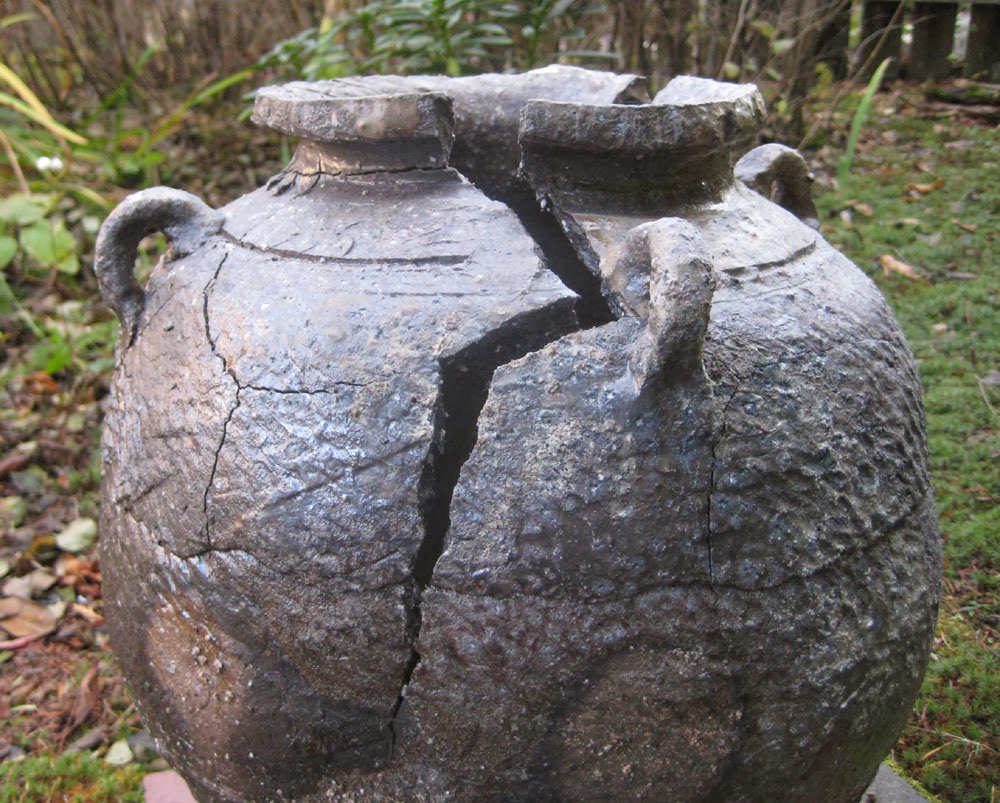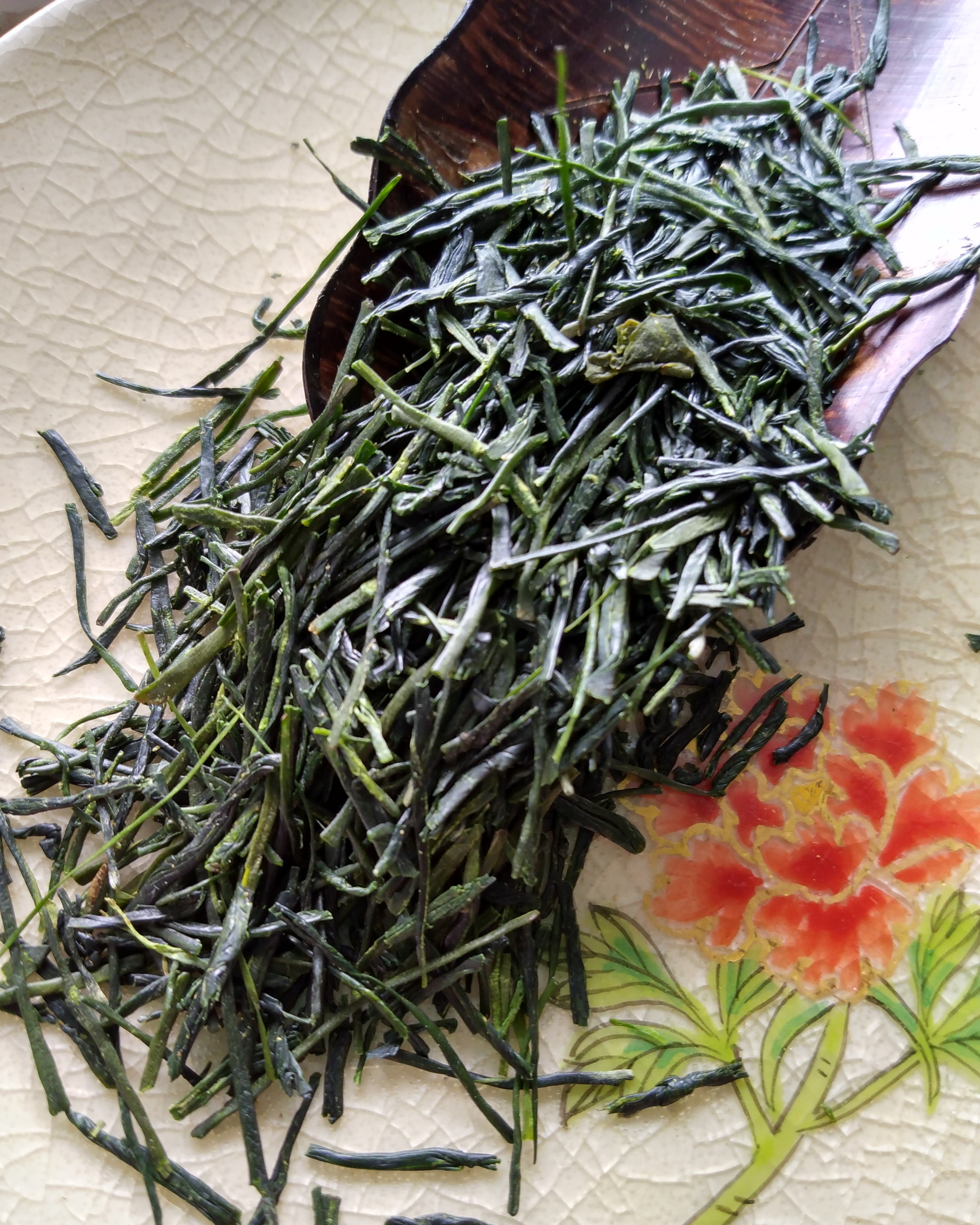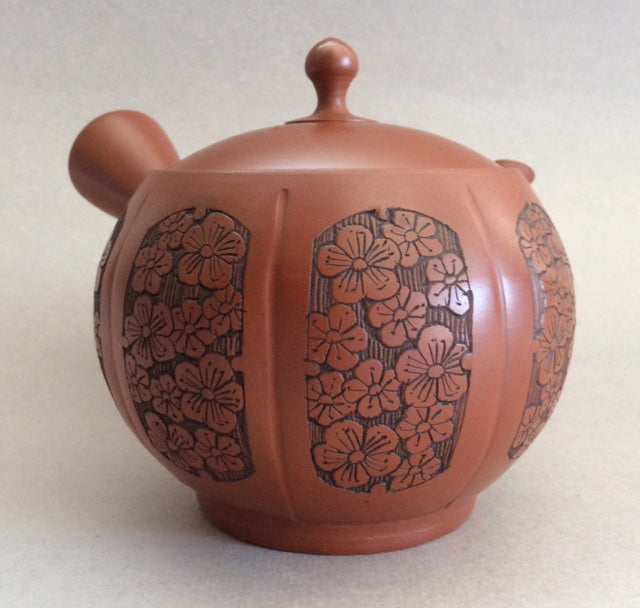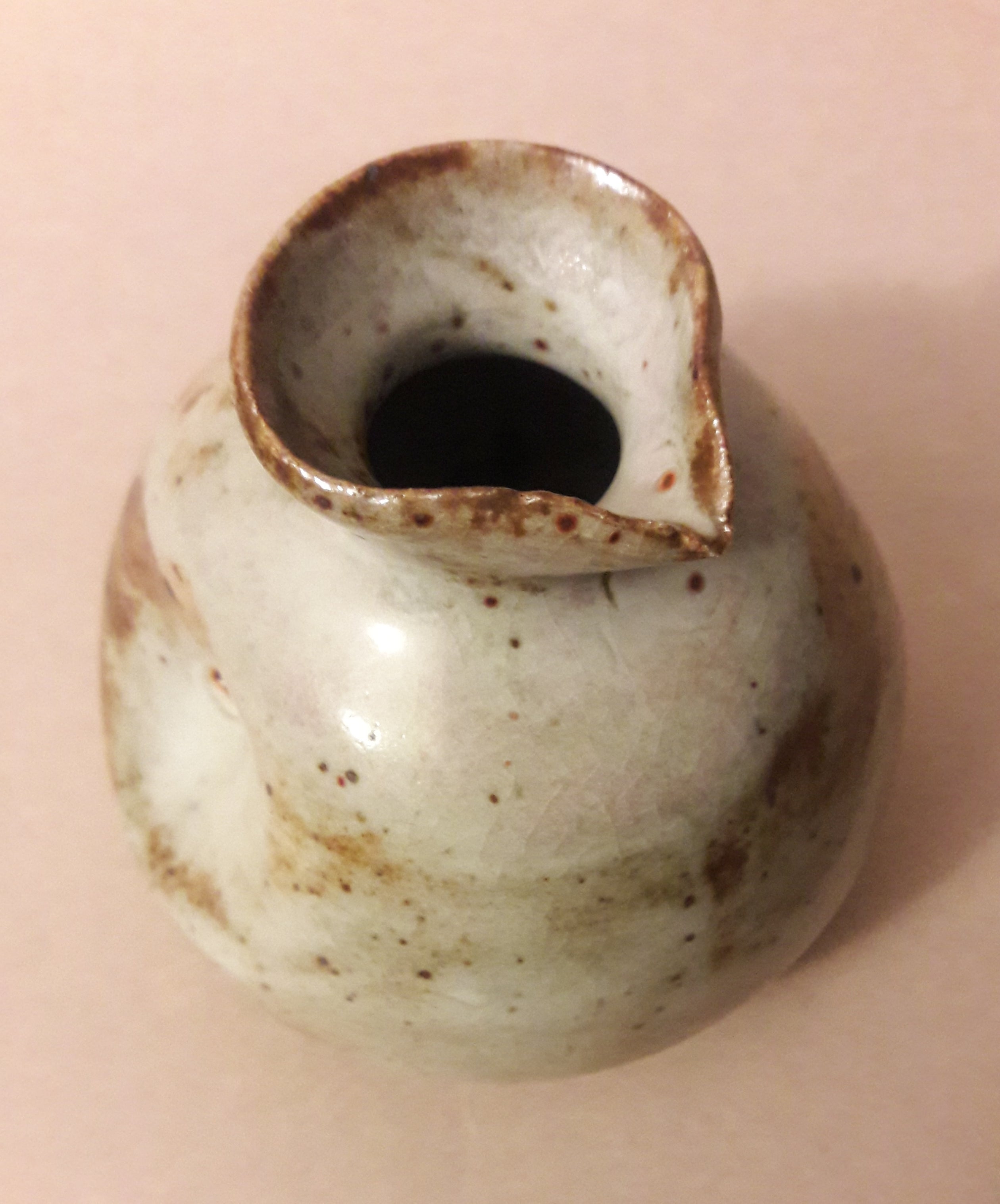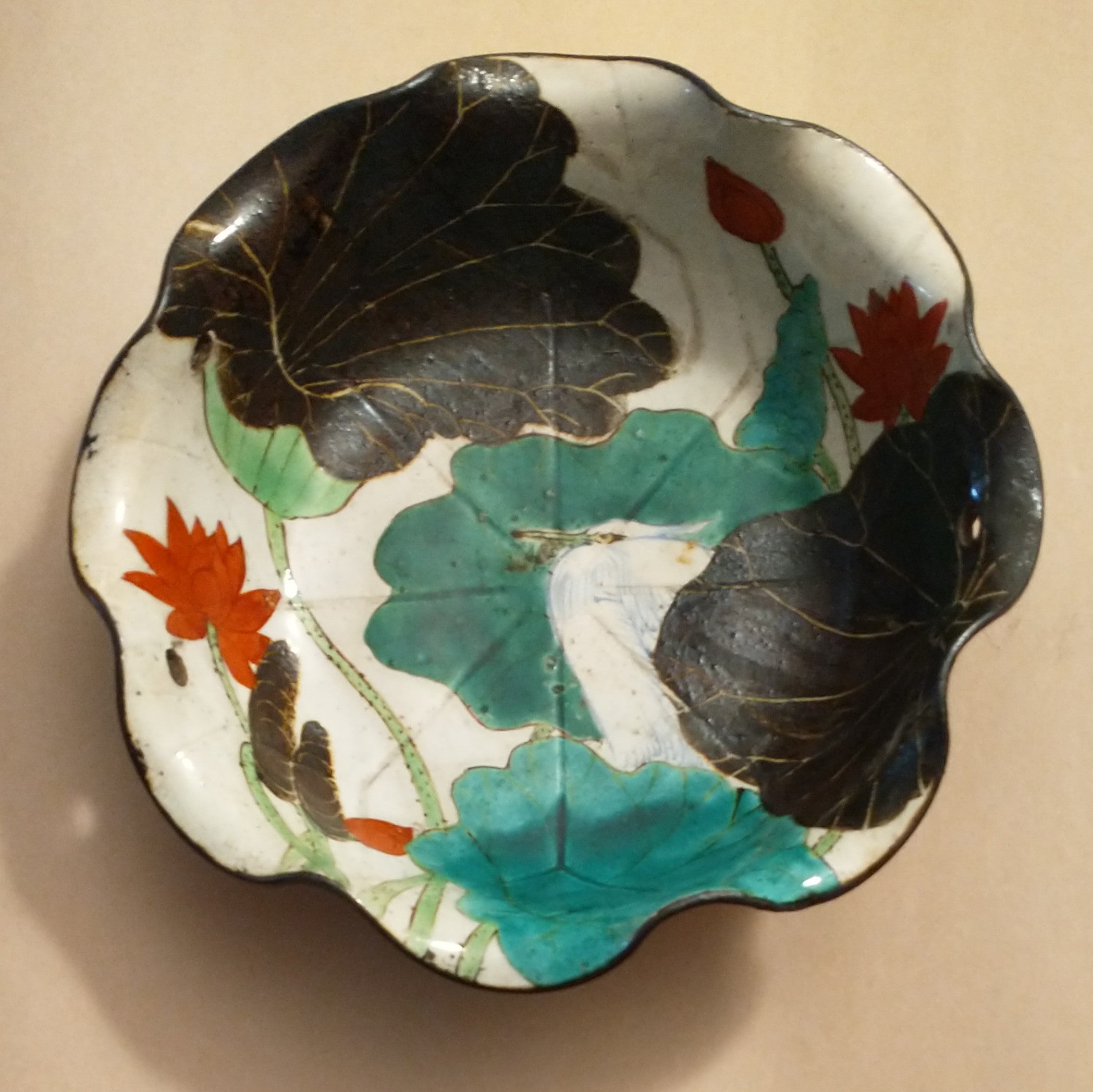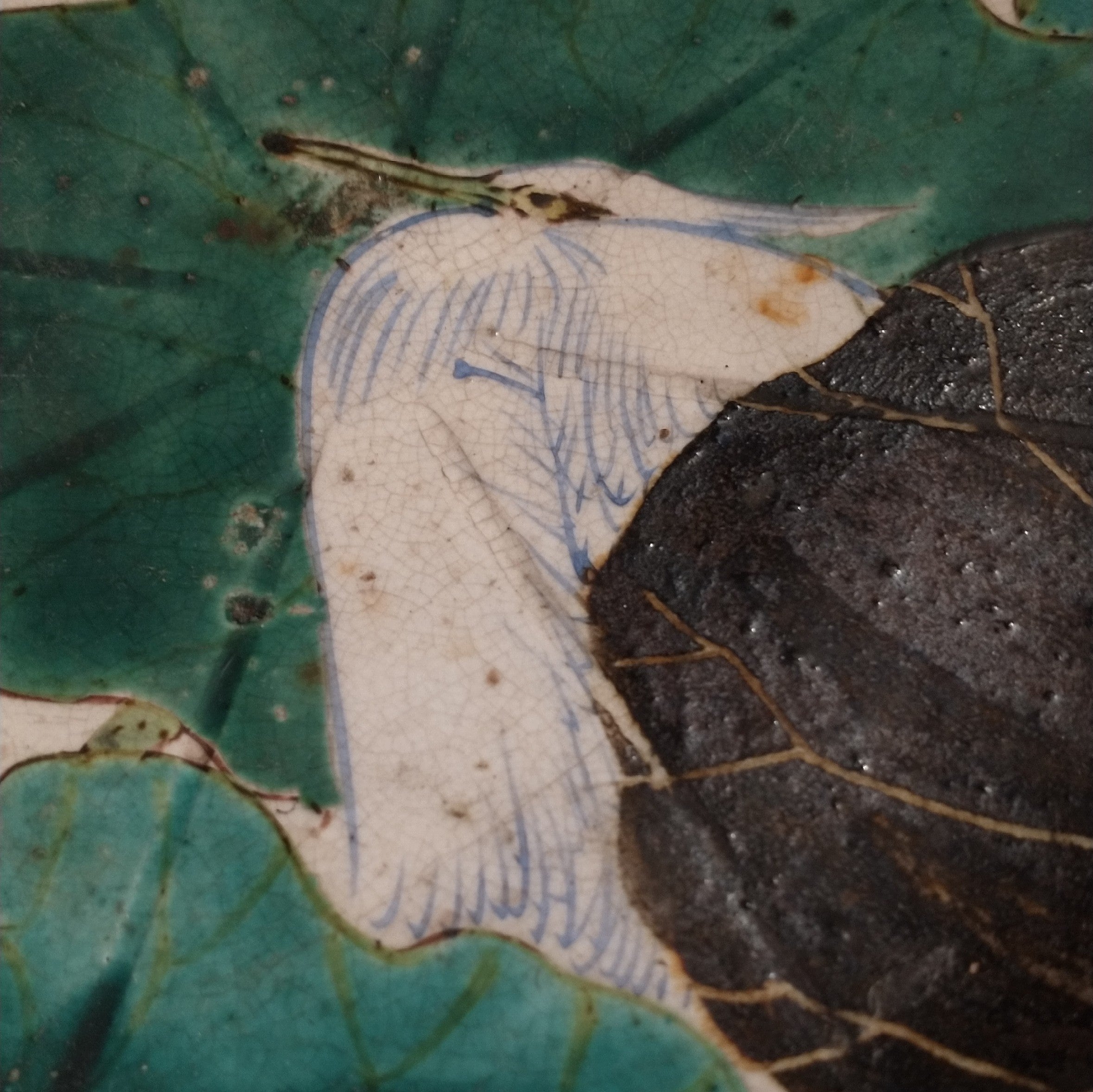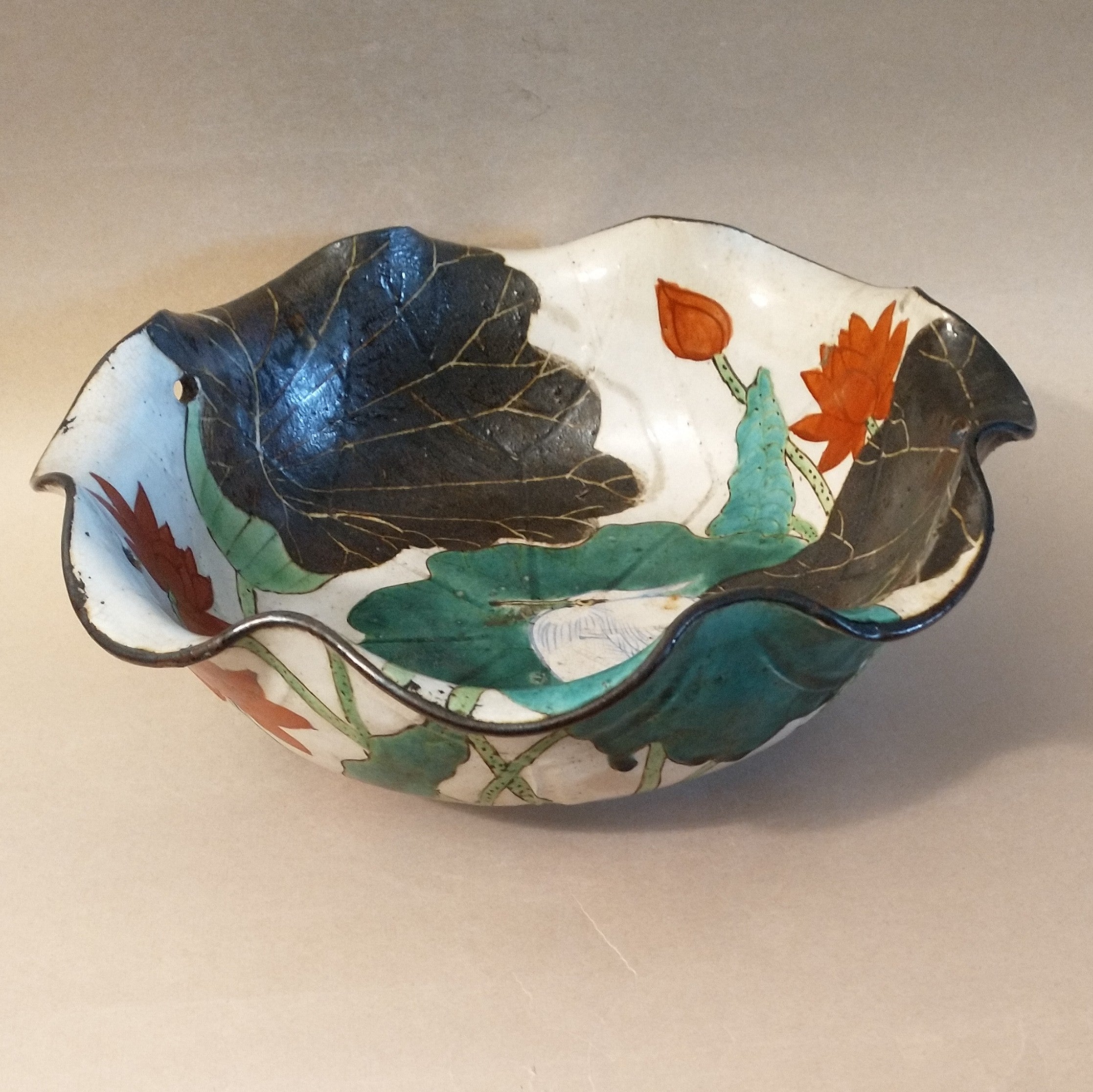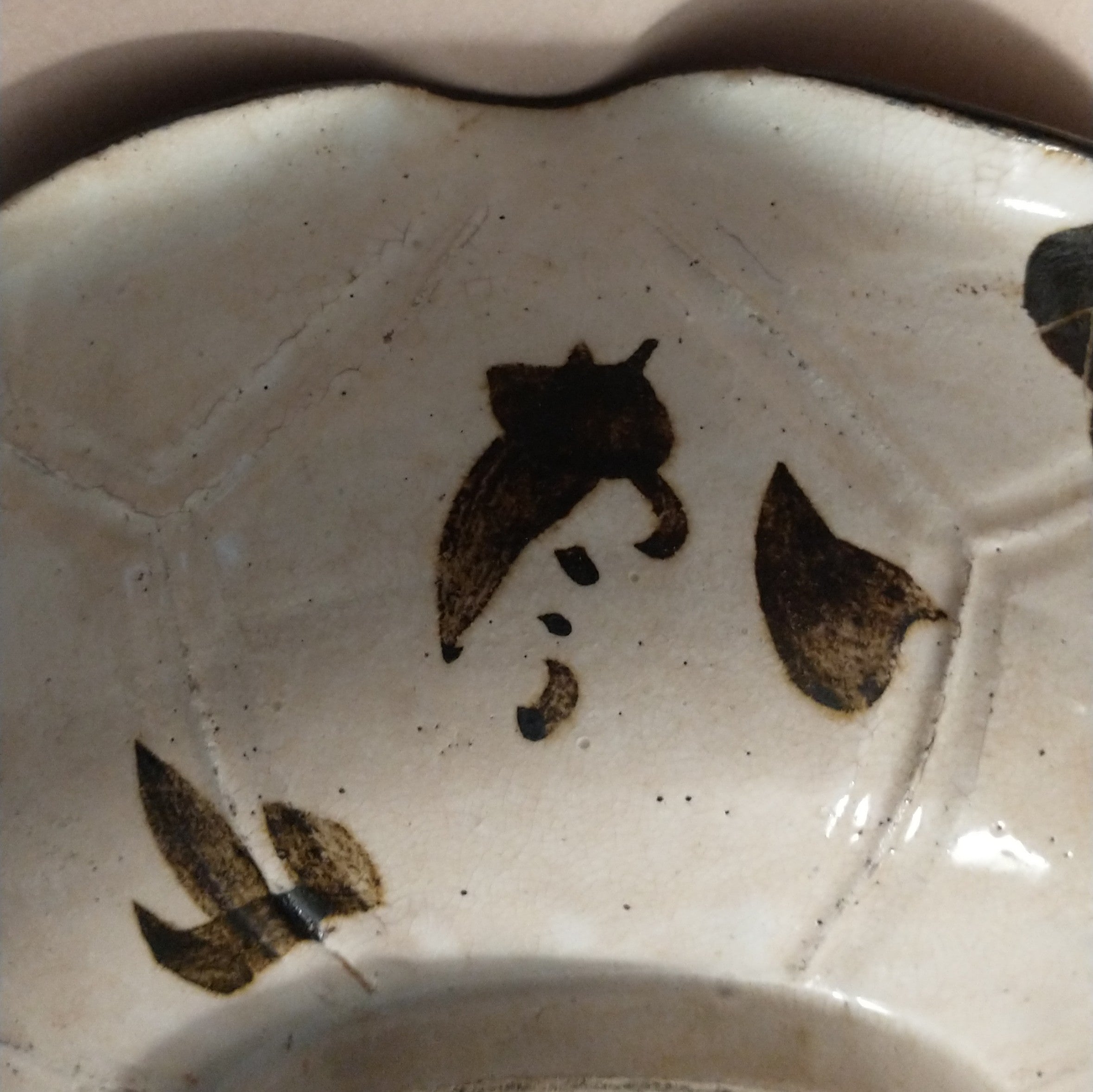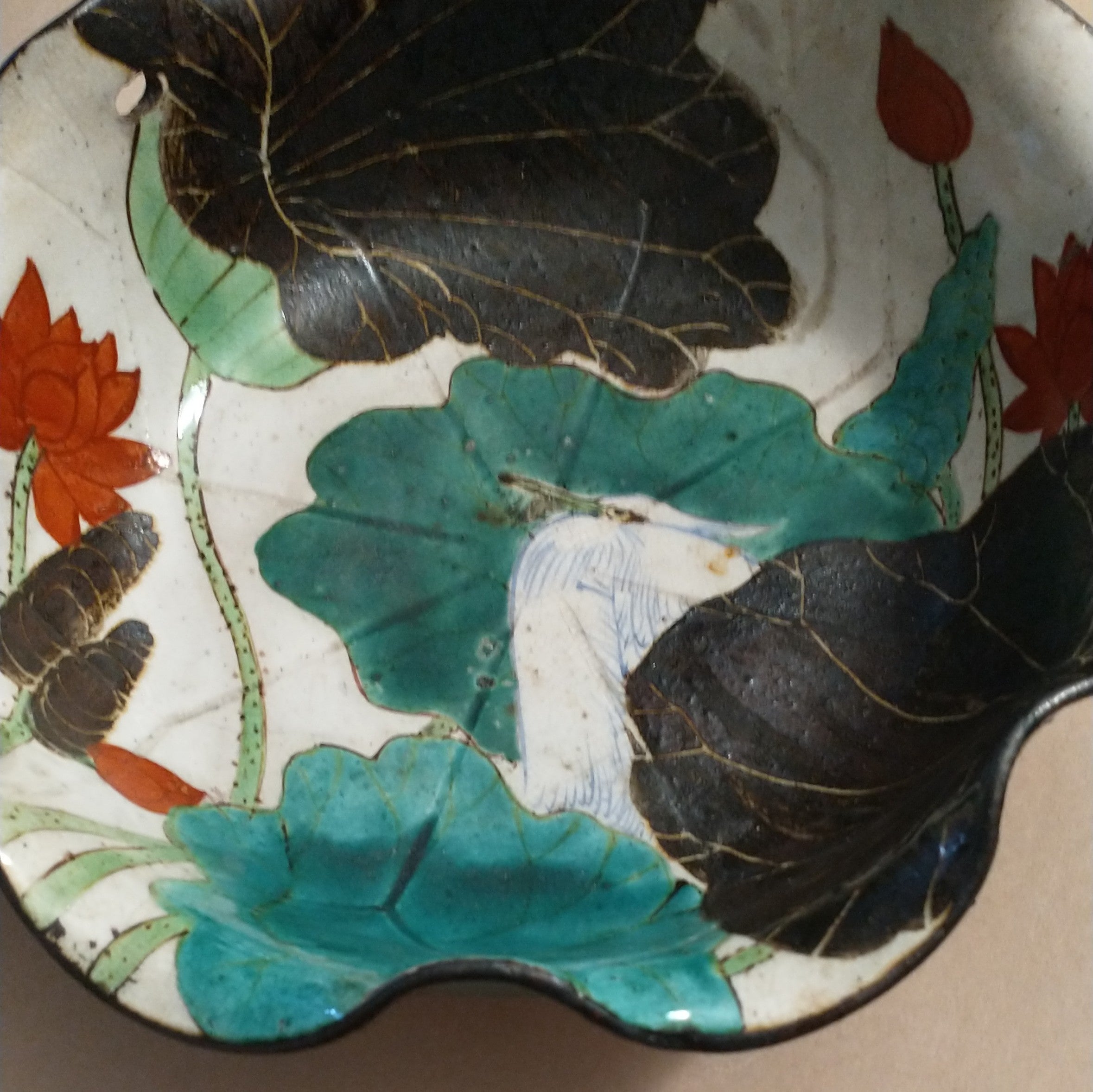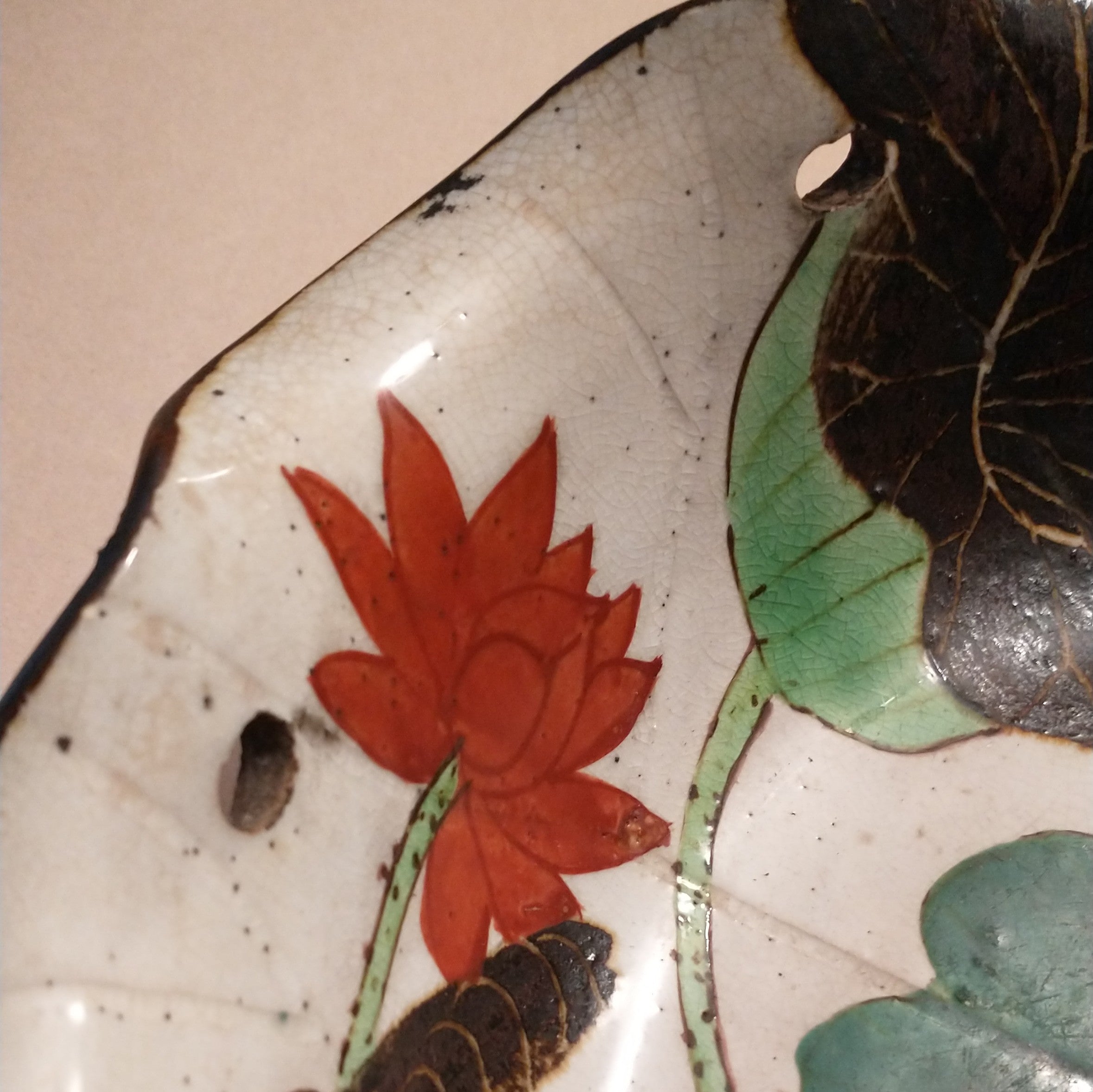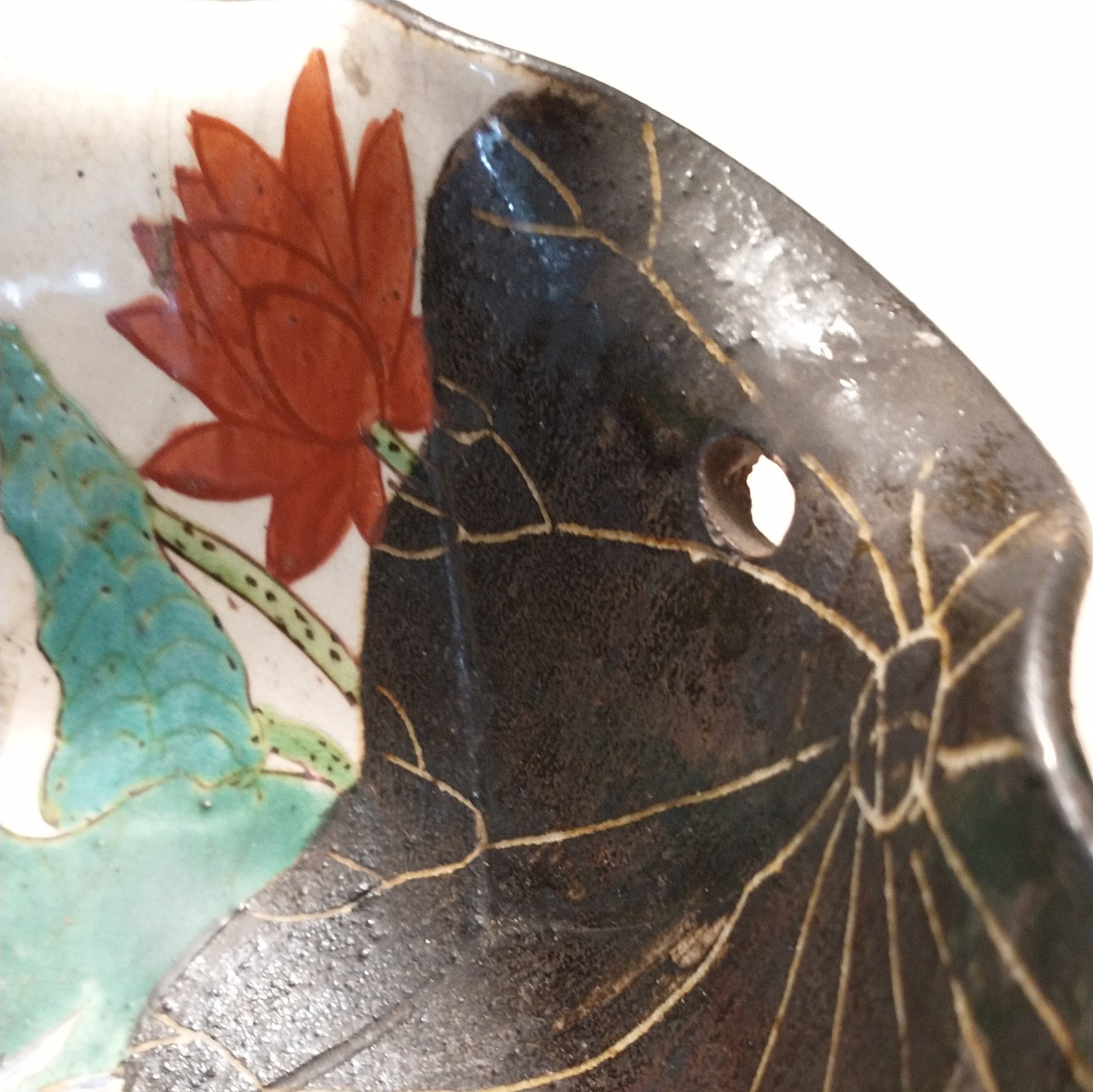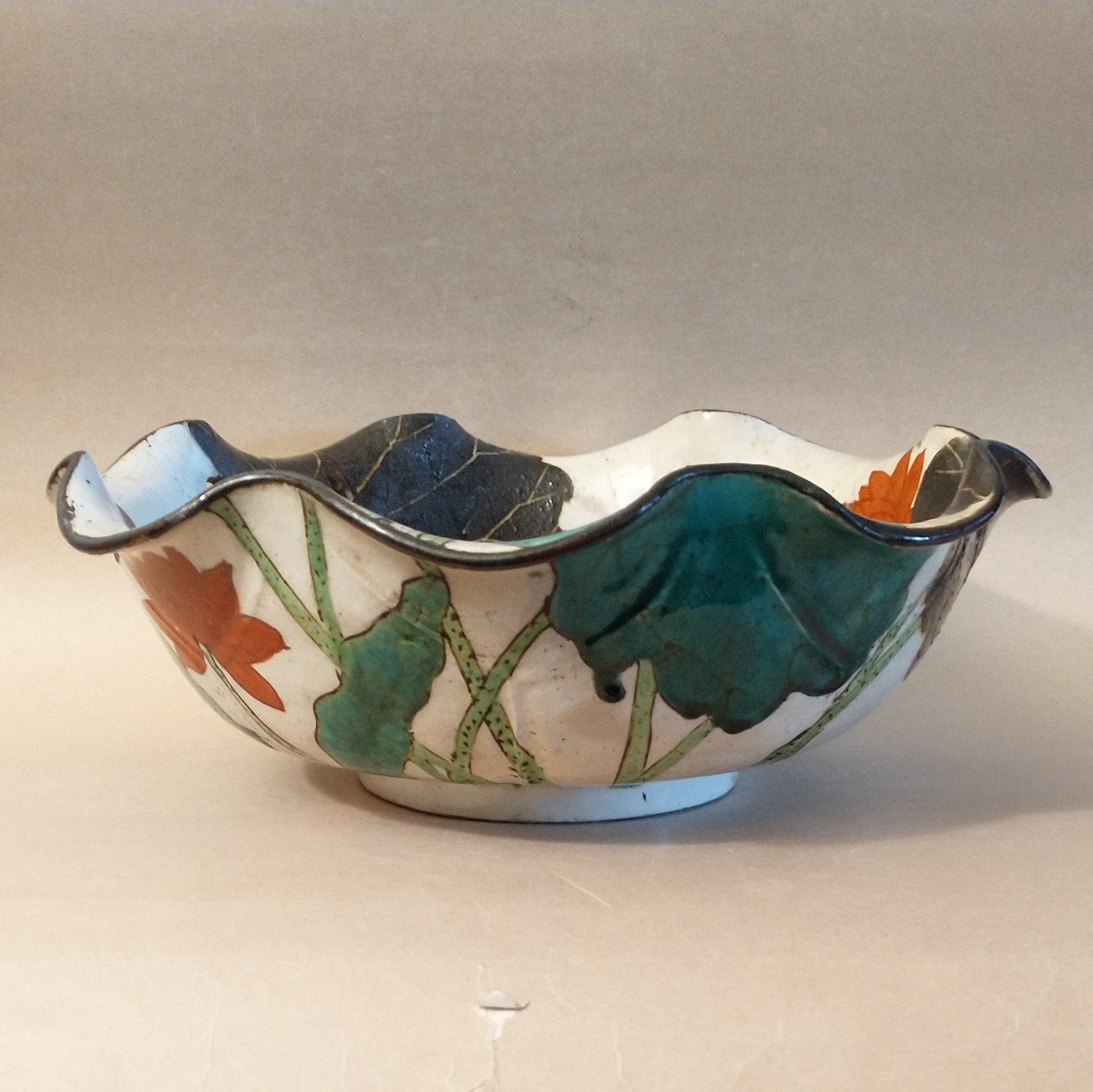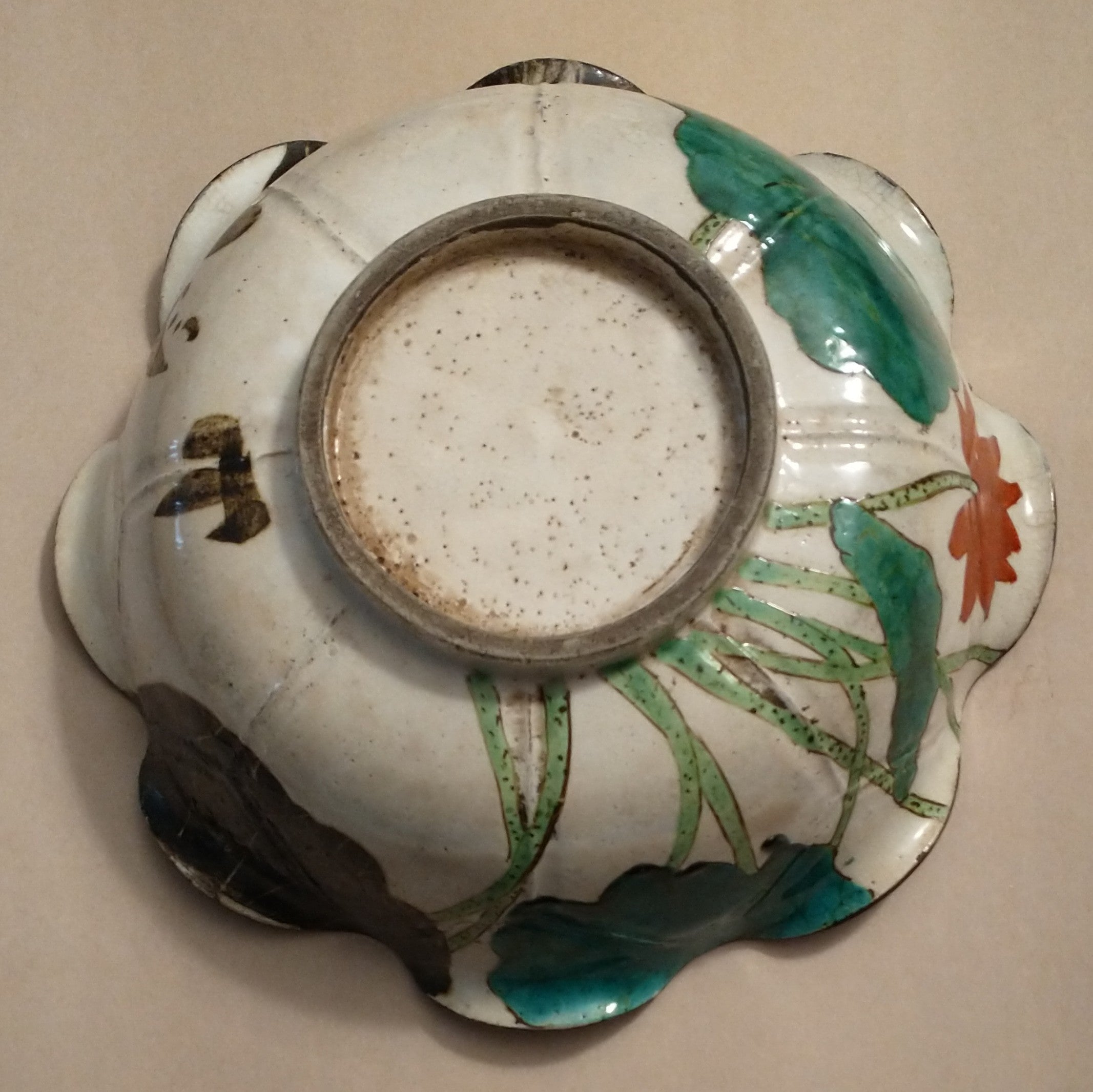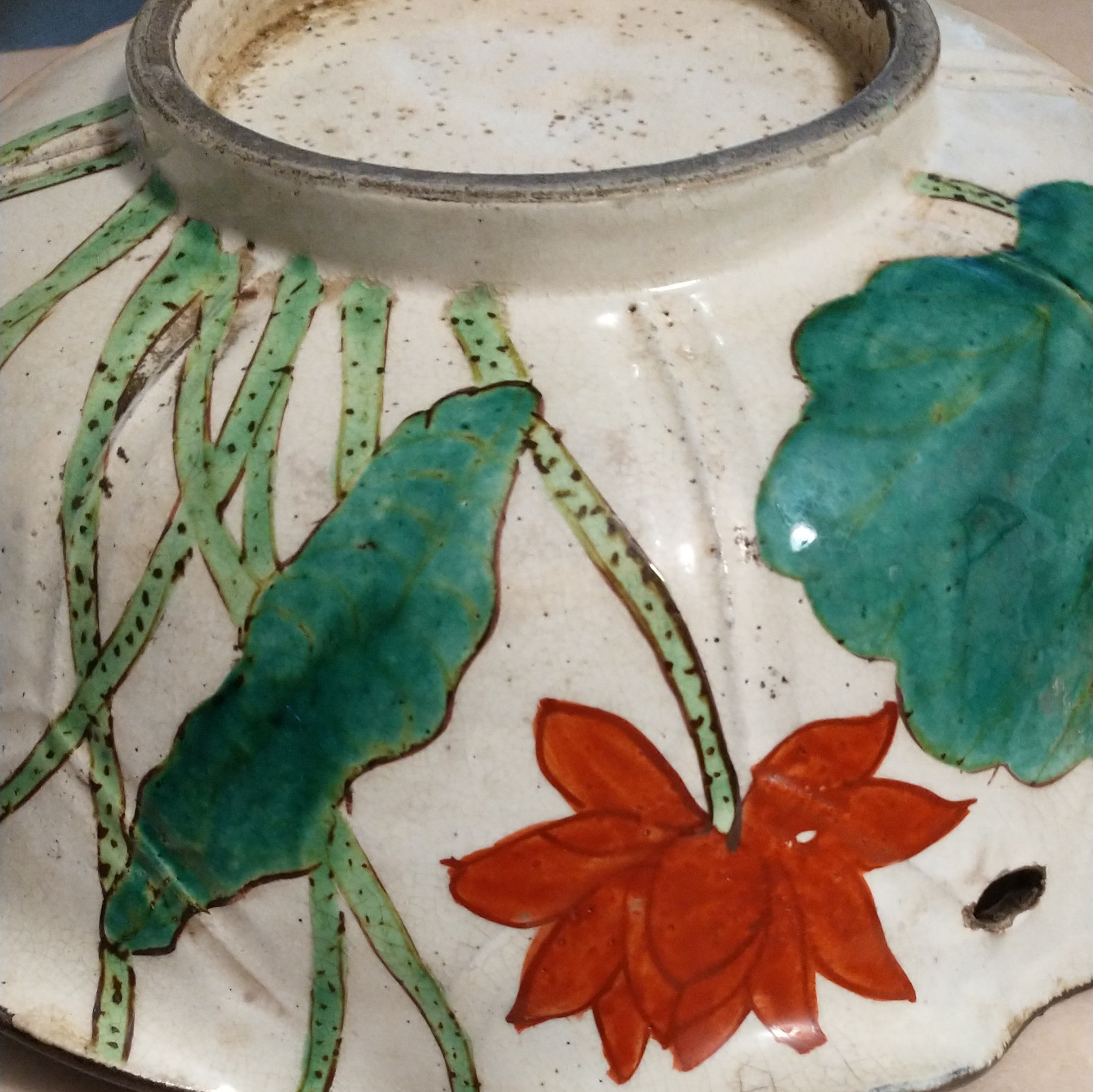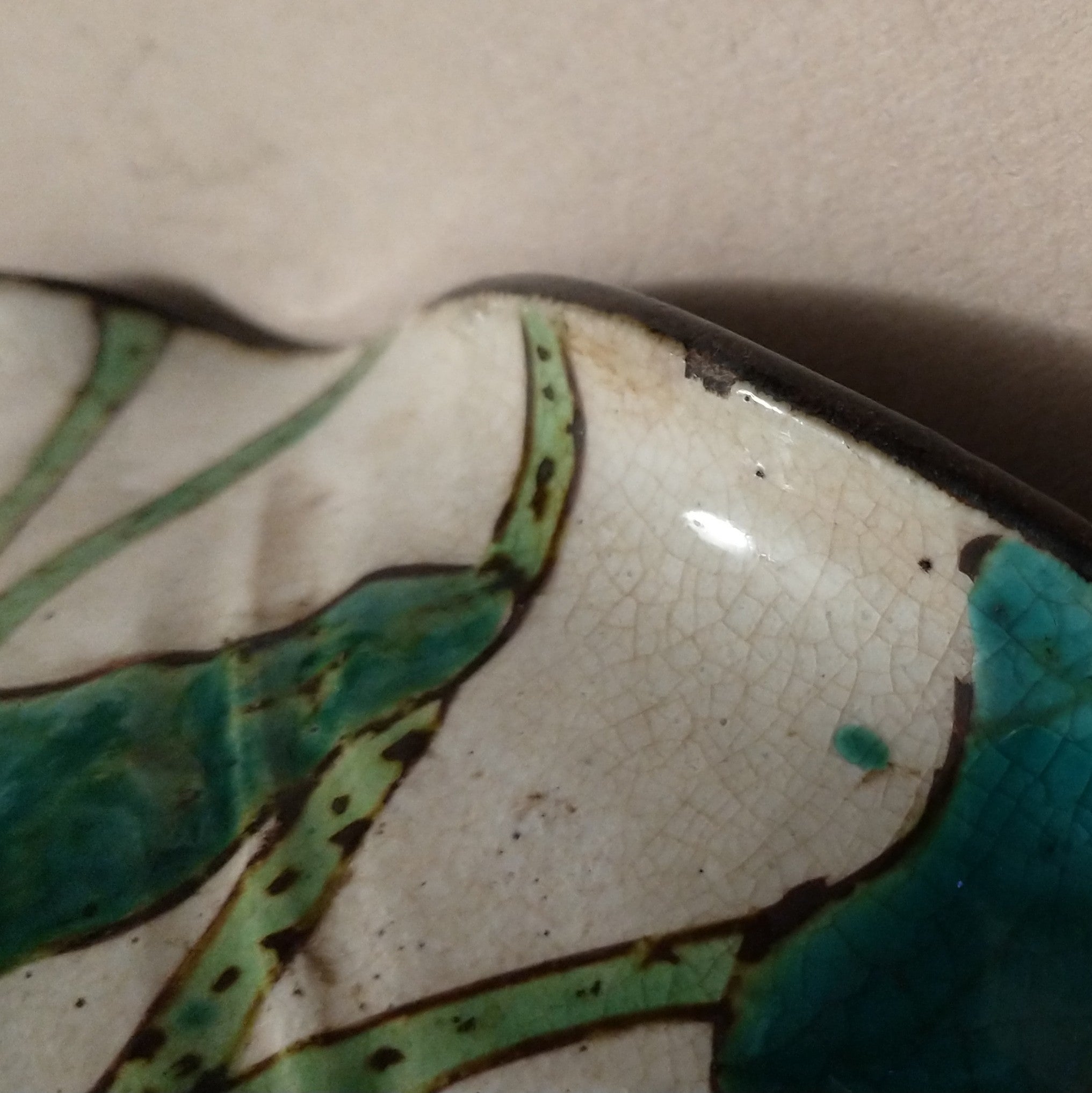This stunning Kenzan-style painted dish features a stately white egret (shirasagi) painted in blue underglaze lines (and yellow overglaze eye) surrounded by large lotus leaves and flowers painted in overglaze green, red, and black enamels. The rounded rim of the bowl is also reminiscent of lotus leaves. Most likely from the school of Kyo-yaki Kenzan-style painters in Kyoto going back some 400 years but still a style still prominent in decorated Kyoto ceramics today. This dish has some age going back to the early 20th C. It is signed "Kenzan" 乾山 as is common even with homage pieces. H.4"(10cm) x Dia.11.625"(29.5cm), weight 1,358 grams (1.36kg/2.16lbs.)
**Condition notes: This piece would have originally had a handle of bamboo or braided vines that were looped into the three existing holes below the upper rim. These natural materials typically do not last with pieces of this age, but the bowl can be used without the handle, or a new handle can be made and easily attached to the piece. Also, there is a very small glaze chip on the underside of the rim as shown in the last photo.
Ogata Kenzan (1663-1743) was born into a family of kimono merchants in Kyoto during the Edo Period (1600-1868). The family shop, Kariganeya, was patronized by members of the family of the Tokugawa Shogunate. Kenzan's father, Souken, was a calligrapher and Noh drama aficionado. His brother was Ogata Kourin, who gained great fame as a Japanese painter. Kenzan took lessons in pottery and painting from famous masters of the day and eventually gained fame himself as a painter of ceramics in Kyoto, and a later workshop in Edo (Tokyo). His paintings reflected nature in a free and flowing style, and he had many patrons among those who favored the aesthetics associated with The Way of Tea. His pieces featured imagery of flowers, leaves, grasses, landscapes, and occasionally animals. He often used vivid colors and he also signed his work, which was not so common among potters and pottery painters of his era. His original works are housed in museums around the world, and his style is still so popular today that works that show appreciation of his aesthetics may still be signed "Kenzan". When you see a piece of Kyoto pottery today that shows the vivid colors of autumn leaves on a tea bowl, grasses flowing in the wind on a plate, or naturalistic flowers decorating a food dish; it could be thanks to the aesthetics of the original Kenzan and his subsequent lineage.
The Thiel Family has graciously allowed me to select a number of items from their parents’ extensive private collection of Japanese and Japanese-inspired crafts to offer here. We are offering them at great values so that they may find new loving homes, and ALL profits are being donated to Midori-sensei’s long-term care fund. Below is some brief information on Philip Thiel and Midori Kono Thiel.
Philip Thiel and Midori Kono Thiel were a decades-long dynamic duo of support and contributions to the Art, Architecture, and Cultural communities of the greater Seattle area and beyond. Their contributions are far too numerous to list here; but they were, to say the least, immense, generous, and sure to leave a lasting legacy. They were also passionate collectors of Japanese arts and crafts; including textiles, ceramics, architectural pieces, wood, lacquer ware, paintings, prints, folk toys, and reference books on all of the above.
Midori Kono Thiel (1933 -) has long been widely recognized for her artistic achievements, her teaching, and her cultural contributions to the Japanese art and culture communities of the Pacific Northwest. After completing her MA in Painting at UC Berkeley, she went to Japan on a UC Traveling Fellowship to study woodblock printing with well-known hanga artists Hiratsuka Un’ichi and Hagiwara Hideo. Over the years, she has studied with numerous Japanese artists in Japan, and at workshops in the U.S. by visiting Japanese artists, in the fields of Sumi and Nihonga painting, calligraphy, print making, weaving, dyeing, music (koto and shamisen), Noh and Kyogen performance, and Nihon Buyo dancing. She had become so well-accomplished in several of these areas that she has received numerous awards in the U.S. and in Japan for her artwork, and she has taught Japanese arts and culture to a variety of students in the region from young children, to university students, to senior adults.
Midori-sensei’s contributions to the cultural community of Seattle have been recognized and awarded by the Japanese Consul General in Seattle for fostering US-Japan relations, and from the Seattle Cherry Blossom Festival for furthering the understanding of Japanese culture in the US. She was a long-time artist in residence for local schools, and for the King County and Seattle Arts Commissions. She was a long-time supporter and performer for the Seattle Japanese Garden, and for numerous cultural festivals across the region over many years. If something “Japanese” was happening, Midori-sensei was always there performing and making invaluable educational contributions.
Philip Thiel (1920-2014) had careers in Naval Architecture (teaching at MIT); as a working (“dry land”) architect at the firms of Bauhaus School architects Marcel Breuer (NY) and Walter Gropius’ The Architects’ Collaborative (Cambridge); as a professor of Architecture and Environmental Design at UC Berkeley; and as Professor Emeritus of Architecture and Urban Planning at the University of Washington, in Seattle. His deep love for the art, architecture, and culture of Japan began with meeting Japanese architect and educator Kiyoshi Seike while at The Architects’ Collaborative; and with meeting his future wife of 59 years, Midori Kono, while at UC Berkeley. This interest led several research visits to Japan, and to teaching Architecture at the Tokyo Institute of Technology and at the Sapporo School of Design.
Although his long teaching career and published architecture books have surely impacted thousands of students from many parts of the world, he was also a community activist in the greater Seattle area. His professional expertise and interests in public spaces, environmental psychology, and the human experience of moving through built environments led him to becoming an important community advocate for park spaces and public plazas in Seattle.
